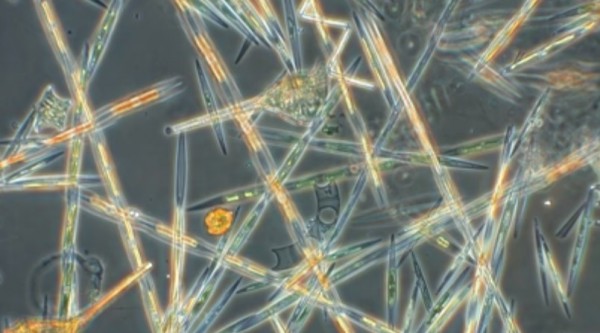By Ana Verayo, | October 02, 2016

Harmful algal blooms in Monterey Bay and southern California in 2015.
Scientists have detected an unusual patch of warm water in the Pacific Ocean, which is also known as the "blob," that led to a massive toxic algae bloom last year across California and British Columbia. The algae bloom led to the closure of commercial fisheries and also disrupted marine ecosystems and wildlife.
Like Us on Facebook
This blob is a vast patch of warm water that stretches in the ocean filled with toxic algae. This algae bloom also produced a massive amount of neurotoxin known as domoic acid, which is hazardous to marine life and humans.
According to the lead author of the study, Ryan McCabe of the Joint Institute for the Study of the Atmosphere and Ocean at the University of Washington, this is the first study to ever link of this Pacific Ocean blob to massive disruptive effects on fisheries and marine wildlife.
In this new study, researchers explained how this toxic algae bloom became widespread in the US. Seasonal algae blooms are common in the West Coast. However, a majority of them are not toxic. Scientists have revealed that this toxic algae bloom is caused by a species known as Pseudo-nitzschia australis.
The algae thrive in warm waters that are devoid of nutrients, which is also warmer on the surface than usual.
Last spring, coastal upwelling brought about cooler and nutrient-rich waters from the deep ocean that provided essential nutrients for the algae bloom to spread quickly. A series of late spring storms then transported this algae bloom to coastal communities.
McCabe added that this blob was not caused by global warming but rather specific climate conditions and changes that led to contamination of marine ecosystems and disrupted commercial fisheries.
According to the co-author of the study, Kathi Lefebvre from NOAA's Northwest Fisheries Science Center, this bloom resulted in high levels of domoic acid that contaminated the food web of many species.
Domoic acid is eaten by anchovies, sardines and other small fish and shellfish that survive on algae for their food. Humans, marine mammals, and marine birds can get sick from eating these poisoned fish.
It can cause permanent loss of short-term memory in severe cases in humans who have consumed contaminated shellfish. California sea lions also experience seizures due to domoic acid poisoning.
This new study has been published in the journal Geophysical Research Letters.
-
Use of Coronavirus Pandemic Drones Raises Privacy Concerns: Drones Spread Fear, Local Officials Say

-
Coronavirus Hampers The Delivery Of Lockheed Martin F-35 Stealth Fighters For 2020

-
Instagram Speeds Up Plans to Add Account Memorialization Feature Due to COVID-19 Deaths

-
NASA: Perseverance Plans to Bring 'Mars Rock' to Earth in 2031

-
600 Dead And 3,000 In The Hospital as Iranians Believed Drinking High-Concentrations of Alcohol Can Cure The Coronavirus

-
600 Dead And 3,000 In The Hospital as Iranians Believed Drinking High-Concentrations of Alcohol Can Cure The Coronavirus

-
COVID-19: Doctors, Nurses Use Virtual Reality to Learn New Skills in Treating Coronavirus Patients







